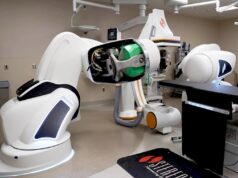
Biotronik has launched its new series of single- and dual-chamber implantable cardioverter defibrillators (ICDs) and cardiac resynchronisation therapy defibrillators (CRT-Ds). The Iperia/Itrevia/Inventra series gained CE-mark approval in July 2014 and marked its first implantations worldwide in mid-July.
With its ProMRI technology, Biotronik offers heart failure patients CRT-Ds and leads that can undergo MRI scans. Patients with single-chamber ICDs can undergo three tesla MRI scans with an exclusion zone. Both single- and dual-chamber ICD patients are eligible for 1.5T full-body scans. To track the MR conditions of implantable devices, Biotronik has recently launched ProMRI SystemCheck.
“MRI diagnostics are very important for my younger patients, who are better off avoiding radiation from X-rays or CT scans and patients with comorbidities like brain tumours, which are best diagnosed with high-resolution images,” says Klaus-Jürgen Gutleben (Heart and Diabetes Centre North Rhine-Westphalia, Germany). “For such patients, I would recommend an implant that can undergo MRI scans, such as the Iperia CRT-D and the Sentus QP lead.”
The Sentus QP lead eases the implantation process by giving physicians better access to challenging vessels. Sentus QP represents the industry’s first quadripolar left-ventricular lead to be approved for MRI use. It offers stable lead positioning in the coronary sinus and various electronic repositioning options to select the optimal stimulation site.
“When deciding on the right device for my heart failure patients, I want to make sure they will benefit as much as possible from cardiac resynchronisation therapy,” Gutleben explains. “Clinical evidence demonstrates that patients have reduced mortality when they receive fewer inappropriate shocks. We also know it can greatly improve their mental well-being and satisfaction with the therapy. Detection criteria and morphology analysis help ensure my patients only receive the therapy they need.”
Biotronik states that the new ICDs reduce inappropriate shocks with MorphMatch morphology detection criteria and optimised anti-tachycardia pacing (ATP), making it easier to give a patient exactly the level of pacing therapy he or she might need. While delivering shocks at the right time can save patients’ lives, minimising shocks improves patients’ quality of life.












